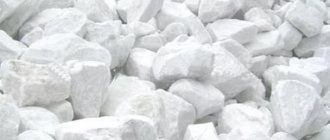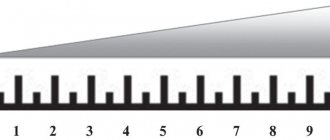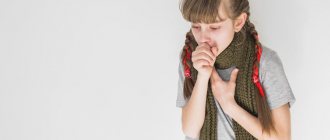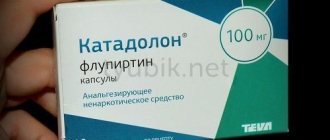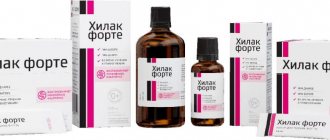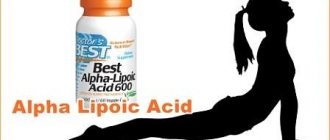Choleretic drugs are often perceived by consumers as light health-improving drugs. But in fact, things are much more complicated - such drugs seriously affect the functioning of the gastrointestinal tract and experimenting with them may be unsafe for health. That is why it is important for the pharmacy worker at the first table to have a clear understanding of how choleretic drugs work and to be able to convey information to the consumer in a simple and understandable form. Let's look at everything in order - from physiological basics to specific questions that should be asked to a pharmacy visitor during a consultation.
Why is bile needed?
TANACECHOL® tablets
herbal choleretic drug
It is used as a choleretic and antispasmodic agent for:
- chronic noncalculous cholecystitis
- hypomotor type biliary dyskinesia
- postcholecystectomy syndrome
ADVANTAGES:
- choleretic effect combined with antispasmodic effect
- affordable price
There are contraindications. Specialist consultation required
Bile is produced in the liver by hepatocytes, then accumulates in the gallbladder and is excreted through the common bile duct into the duodenum along with pancreatic secretions. That is, the gallbladder acts as a reservoir and transfers bile to the duodenum.
The chemical composition of bile is represented mainly by bile acids. The composition of bile “in numbers” looks like this:
- bile acids - 35.0 mmol/l;
- bile pigments - 0.8–1.0 mmol/l;
- cholesterol ~ 3.0 mmol/l;
- phospholipids - 1.0 mmol/l.
About 22% of bile is phospholipids. In addition, bile contains proteins (immunoglobulins A and M) - 4.5%, cholesterol - 4%, bilirubin - 0.3%, mucus, organic anions (glutathione and plant steroids), metals (copper, zinc, lead, indium, magnesium, mercury, etc.), as well as lipophilic xenobiotics [1].
The synthesis of these substances occurs during the breakdown of cholesterol and its removal from the human body.
Bile performs two important functions in the body:
- removal from the body of lipophilic components that cannot be excreted by the kidneys in the urine;
- secretion of bile acids, which are involved in the digestion of dietary fat and the absorption of its hydrolysis products.
In addition, bile acids found in bile improve intestinal motility, which naturally prevents constipation. Bile acids also have antiseptic properties and reduce the risk of intestinal infections [2]. Thanks to bile, toxins are removed from the body. In general, any failure in bile transit can cause a lot of trouble. Most often this is:
- nausea;
- pain after eating;
- repeated moderate pain localized in the epigastrium;
- vomit.
What should a pharmacist know?
First of all, which choleretic drugs have a stimulating mechanism of action, which have a contractile mechanism. Depending on the leading mechanism of action, choleretic agents are divided into:
- Choleretics - drugs that enhance bile production;
- cholekinetics - stimulating the flow of bile from the gallbladder into the intestines.
Choleretic drugs for the treatment of children
In childhood, the following choleretic drugs can be used:
- From 3 years of age Holosas is prescribed.
- From six months you can use Papaverine and Atropine, but under strict medical supervision.
- From the age of 6 years, Hofitol, Flamin and Eufillin are prescribed.
- From 7 years old you can take Urolesan.
- Duspatalin is allowed to be taken from 10 years of age.
However, before starting treatment, consultation with a specialist is required.
Part 1. The most important things about choleretics
According to the classification, choleretics are divided into two groups: those that increase the secretion of bile and the formation of bile acids, as well as those that increase the secretion of bile due to the water component.
The first group is drugs that contain bile acids. Such choleretics, in addition to lyophilized animal bile, include extracts of liver tissue, pancreatic tissue and mucous membranes of the small intestine of cattle, activated carbon and extracts of medicinal plants.
Note: choleretics with synthetic bile acids increase the volume of bile produced, and preparations containing animal bile both stimulate bile formation and directly perform a replacement function [3].
Synthetic drugs, in addition to choleretic, also have antispasmodic, hypolipidemic, antibacterial, anti-inflammatory effects, and also suppress the processes of putrefaction and fermentation in the intestines.
Choleretics of plant origin, which include corn silk, tansy, birch buds, Far Eastern lily of the valley herb, turmeric root, oregano herb, immortelle flowers, etc., increase the functional capacity of the liver, reduce the viscosity of bile, increase the secretion of bile, increase the content in bile cholates
Along with increasing bile secretion, most plant choleretics increase the tone of the gallbladder and at the same time relax the smooth muscles of the biliary tract and sphincters of Oddi and Lutkens. This facilitates the flow of bile.
Herbal medicines that have a choleretic effect also have a significant effect on other functions of the body - they normalize and stimulate the secretion of the glands of the stomach and pancreas, increase the enzymatic activity of gastric juice, and enhance intestinal motility during atony.
The second group is drugs that increase the secretion of bile due to the water component (mineral waters).
Mineral waters make bile less viscous. Mineral salts help increase the colloidal stability of bile; and this, in turn, indicates the preservation of cholesterol in a dissolved state and prevents the development of cholelithiasis [4].
Indications for the use of choleretics
: chronic cholecystitis and cholangitis, treatment of biliary dyskinesia and constipation. If necessary, choleretics are combined with antibiotics, analgesics and antispasmodics, as well as laxatives [5]. The mayor must remember that choleretics are contraindicated in acute forms of cholecystitis, pancreatitis, cholangitis, hepatitis, gastric and duodenal ulcers. Taking them against the background of the listed diseases can provoke a deterioration in health and the need for surgical intervention.
List of cholespasmolytic drugs
Medicines in this group are:
Bellalgin
The composition of the drug includes belladonna extract, metamizole, soda and benzocaine. A similar drug containing belladonna extract is Atropine.
Bellalgin can cause serious side effects, so it is prescribed exclusively on medical advice. Most often, the patient is prescribed one tablet 2-3 times a day.
You should not take Bellalgin during pregnancy, against the background of tachycardia, with glaucoma, if there is a violation of the liver or kidneys, or against the background of hematopoietic disorders.
The obvious advantage of the drug is its low cost. For a package of 10 tablets you will need to pay 60 rubles. In addition to the fact that it has an antispasmodic effect, the drug helps eliminate pain.
The disadvantages of the drug include its multiple contraindications and side effects. Despite the fact that Bellalgin has an analgesic effect, it should not be taken for acute pain until the cause has been established.
Metacin
The basis of the drug is a substance called methocinium iodide. Metacin has no analogues. As a rule, patients are prescribed 1-2 tablets, 2-3 times a day.
You should not take the drug if you have diseases of the cardiovascular system, with reflux esophagitis, with a hernia of the diaphragm, or against the background of renal and liver failure.
The obvious advantage of the drug is that it can be prescribed for the treatment of pregnant women and children. In addition, Metacin has a pronounced analgesic effect, so it is allowed to be used to relieve renal colic. The price of the drug is not high and is within 180 rubles.
The downside of the drug is the presence of side effects, and quite serious ones, for example, paralysis of accommodation, urinary retention and increased intraocular pressure.
Platyfillin
The main active ingredient is platyphylline hydrotartrate. The drug has no analogues. It can only be used in the form of subcutaneous injections.
Platyfillin should not be prescribed to patients with atherosclerosis, heart disease, diaphragmatic hernia, or against the background of bleeding from the stomach or intestines.
The advantages of the drug include its low cost (for 10 ampoules you will have to pay 70 rubles), rapid elimination of pain and spasms. Moreover, this one is time-tested.
As for the disadvantages of Platiphylline, they include pain at the site of its administration. There is no possibility of oral administration, since the drug is released only in the form of a solution for injection.
Papazole
Papazole is a drug based on papaverine hydrochloride and bendazole. Similar drugs include Dibazol, Papaverine in suppositories and injections.
Take Papazol one tablet 2 or 3 times a day.
The drug should not be used to treat patients with low blood pressure or the elderly.
The advantages of the drug include its extremely low cost (10 rubles per package containing 10 tablets), as well as the combined effect. In addition to the antispasmodic effect, Papazol is able to stimulate the immune system, lower blood pressure and relax vascular walls that are in hypertonicity.
The disadvantages of the drug include the presence of contraindications and side effects. It is not prescribed to patients suffering from renal failure. In addition, Papazol can interact with many medications, so only a doctor can recommend its use.
Drotaverine
The main active ingredient is drotaverine. An analogue of this drug is No-shpa.
Take the drug 1-2 tablets no more than three times a day. Drotaverine should not be prescribed to patients suffering from atherosclerosis and glaucoma.
Drotaverine is an inexpensive medicine of domestic origin, its cost does not exceed 70 rubles per package. Also, the advantage of the drug is its speed of action, the duration of the analgesic effect and high bioavailability, which is equal to 100%.
As for the disadvantages of Drotaverine, these include only the side effects that it can give. First of all, this concerns a sharp decrease in blood pressure and depression of the respiratory center. In childhood, the drug can only be used in tablet form.
Duspatalin
The main active ingredient is mebeverine. An analogue of Duspatalin is the drug Mebeverine. It is taken one capsule twice a day.
The drug is not prescribed to children under 10 years of age, or to pregnant women.
As for the advantages of the drug, these include quick relief of spasms and targeted effects. Duspatalin can be taken for two weeks without consulting a specialist, but provided that the person has no contraindications to it.
The disadvantages of the drug include its high cost and side effects. For packaging you will need to pay from 510 to 600 rubles.
Eufillin
The main active ingredient is aminophylline. An analogue of Eufillin, the drug Aminophylline, is currently undergoing re-registration.
Patients are prescribed Eufillin 1 tablet 3 times a day.
The drug should not be used against the background of myocardial infarction, arrhythmia or other heart diseases. It is not prescribed for acute gastric ulcers. It is also contraindicated in children under 6 years of age, patients with epilepsy and hyperthyroidism.
The price of Eufillin is low and amounts to 20 rubles. Also, the advantages of the drug include its speed of action and a small number of side effects.
The disadvantage of the drug is the presence of contraindications, which are mainly associated with diseases of the cardiovascular system. Therefore, most cardiac patients simply will not be able to use Eufillin to relieve spasm and pain.
Galidor
The main active ingredient is bencyclane. The drug has no analogues. You need to take one tablet 3 times a day.
The drug is not prescribed for myocardial infarction. It is contraindicated in people under the age of 18, as well as in patients with epilepsy and hyperthyroidism.
The advantages of the drug include the rapid provision of an analgesic effect. It can be used by patients suffering from cholecystitis and cholelithiasis. The drug is prescribed to people who have undergone surgery to remove the gallbladder and for dyskinesia of the sphincter of Oddi.
The downside of Galidor is its high cost. For a package of 50 tablets you will need to pay 550 rubles. In addition, the drug cannot be used to treat pregnant and lactating women, as well as for liver failure.
Buscopan
The main active ingredient is hyoscine. The drug has no analogues. It is not prescribed for urolithiasis, atherosclerosis and glaucoma.
The advantages of the drug include its pronounced antispasmodic effect (occurs 15 minutes after administration) and a decrease in the production of digestive secretions, which is very important for choleretic drugs. At the same time, Buscopan has no effect on the central nervous system.
The only drawback of the drug is its high cost. It varies in the range of 360-380 rubles.
Part 2. The most important things about cholekinetics
Cholekinetics are also divided into two groups:
- Actually, cholekinetics, which include:
- magnesium sulfate;
- polyhydric alcohols (sorbitol, mannitol, xylitol);
- sunflower, olive oils, essential oils;
- herbs and plants containing bitterness;
- juices of lingonberries, cranberries, etc.
- Cholespasmolytics:
- hyoscine butyl bromide;
- papaverine;
- drotaverine
Indications for the use of cholekinetics:
- atony of the gallbladder with stagnation of bile;
- gallbladder dyskinesia;
- chronic cholecystitis;
- chronic hepatitis;
- anacid and strong hypoacid gastritis;
- carrying out duodenal sounding.
Cholespasmolytics are prescribed for the hyperkinetic form of biliary dyskinesia and for cholelithiasis. They are used to relieve pain of moderate intensity, often accompanying pathology of the biliary tract [6, 7].
Such drugs are contraindicated
in acute liver diseases, with exacerbation of hyperacid gastritis and peptic ulcer of the stomach and duodenum. In this case, taking cholespasmolytics will only worsen the situation.
Review of choleretic agents
The use of choleretic drugs in the practice of a therapist and gastroenterologist is a pressing problem of modern medicine. This problem is described in some detail by the authors on the website of the Russian Medical Journal. Let us remind you that
scientific periodicals reviewed by the Higher Attestation Commission.
This list of choleretic drugs includes effective and quite often prescribed by gastroenterologists and therapists, both cholekinetics and choleretics. In the case of one active substance that has an international nonproprietary name (INN), it is given first, and only then the commercial or trade name of the drug. There may be several of them, both expensive, imported and more affordable domestic drugs.
As a rule, the most expensive drug on the list is the original one, that is, created for the first time; there is the largest amount of data, scientific research, clinical studies of effectiveness and safety on it. If possible, you should prefer the original drug, or, as a last resort, purchase generics from well-known manufacturers and in the middle price range. You should not buy the cheapest medications, since the quality of the substance used in this case may not be as high as that of the original drugs.
For each drug, the price range is given that is relevant for January-February 2021 for pharmacies of all forms of ownership on the territory of the Russian Federation. This list is not an advertisement or a pretext for purchase; the information is taken exclusively from official instructions for medicinal products that are publicly available. The prescription of any choleretic agent is the prerogative of the doctor, taking into account the established diagnosis, indications and contraindications.
The information below is for informational purposes only and cannot be used as an argument for prescribing medications without a doctor’s examination and self-medication. All drugs from this list exist in international and national clinical recommendations of gastroenterologists, and are included in the corresponding treatment algorithms and protocols. The review begins with choleretics.
| Nomination | Place | Name | Price |
| Choleretic - choleretics: stimulants of education | 1 | Allohol | 55 ₽ |
| 2 | Gimecromon (Odeston) | 550 ₽ | |
| 3 | Holosas and other herbal remedies | 130 ₽ | |
| 4 | Sibektan | 170 ₽ | |
| 5 | Ursodeoxycholic acid (Ursosan, Ursofalk, Urdoxa, Ursodez) | 775 ₽ | |
| Choleretic-kinetics: stimulants of bile removal | 1 | Magnesium sulfate (magnesium) | 35 ₽ |
| 2 | Sorbitol (Sorbitol) | 145 ₽ | |
| 3 | No-spa (drotaverine) | 130 ₽ |
